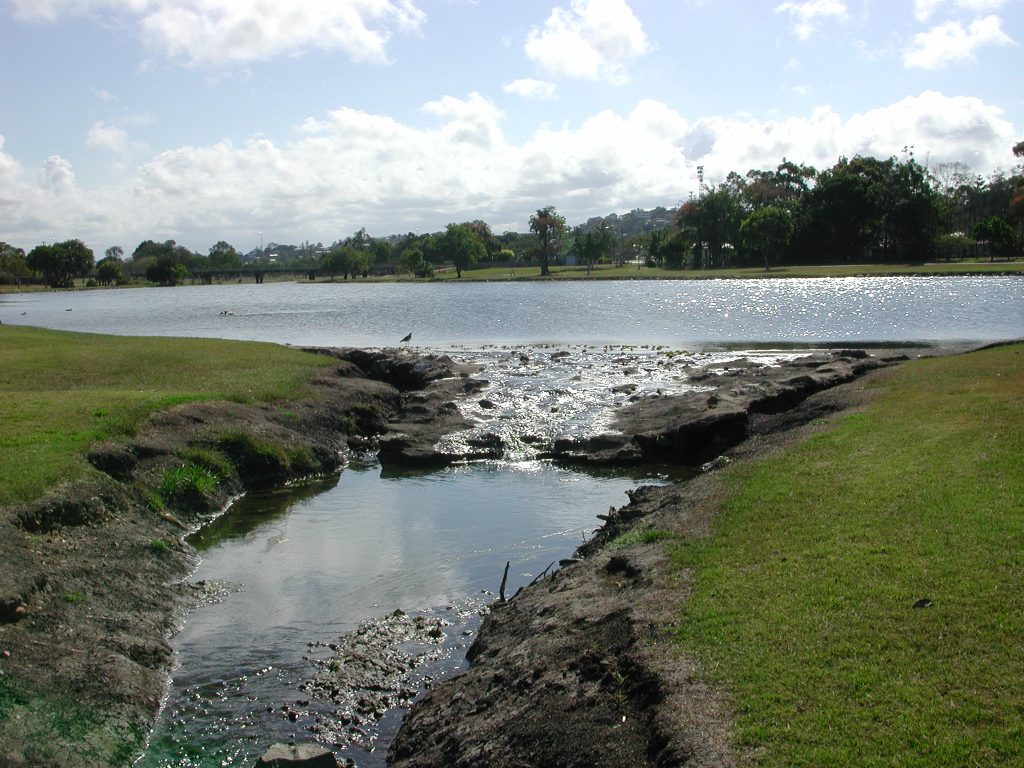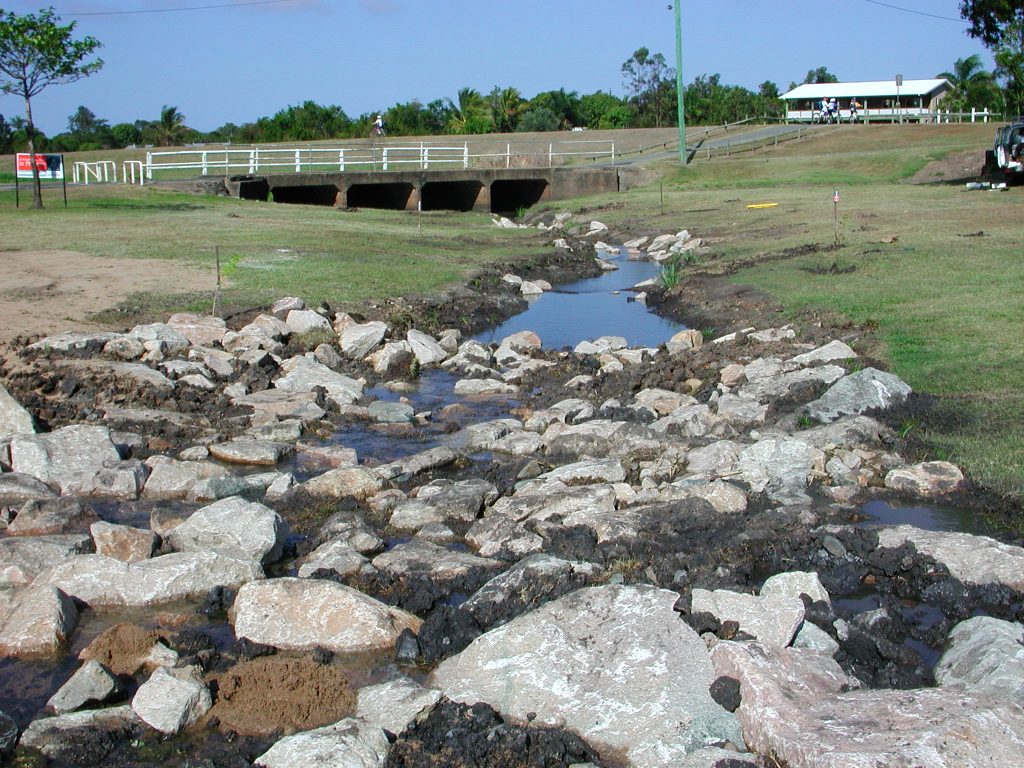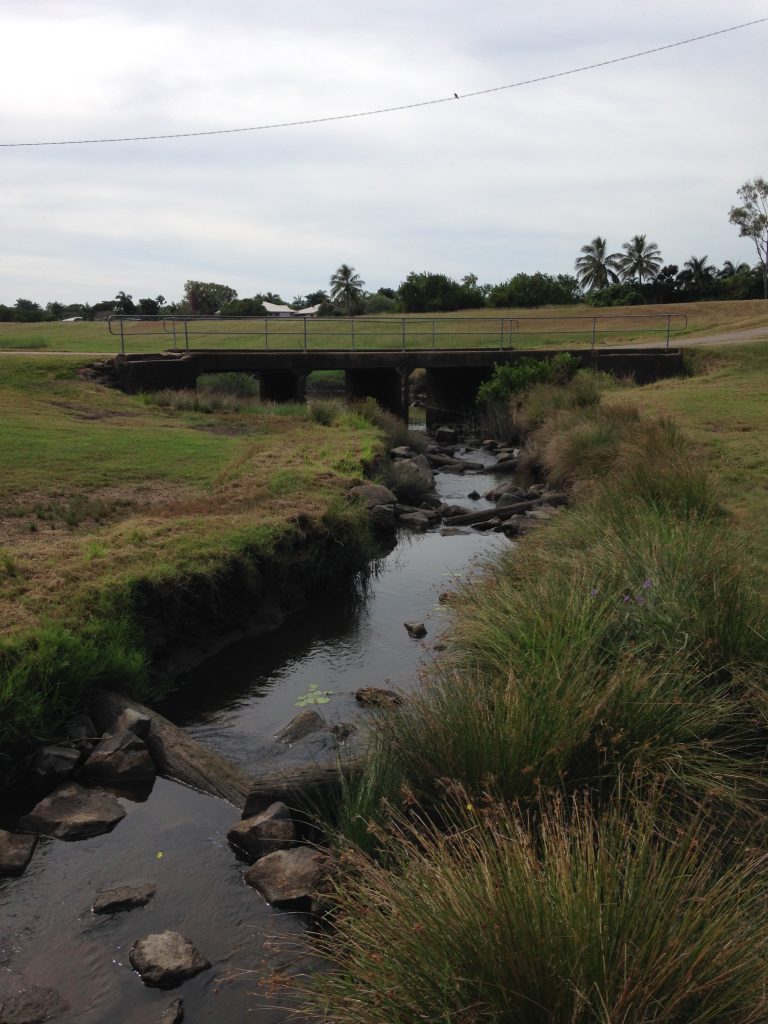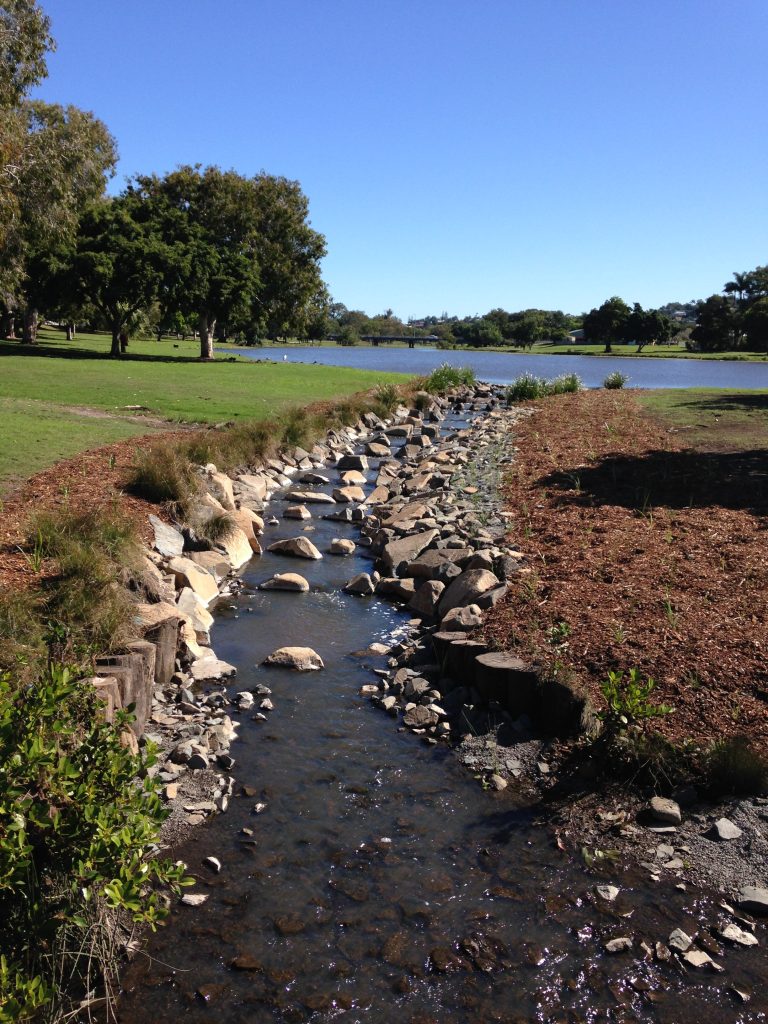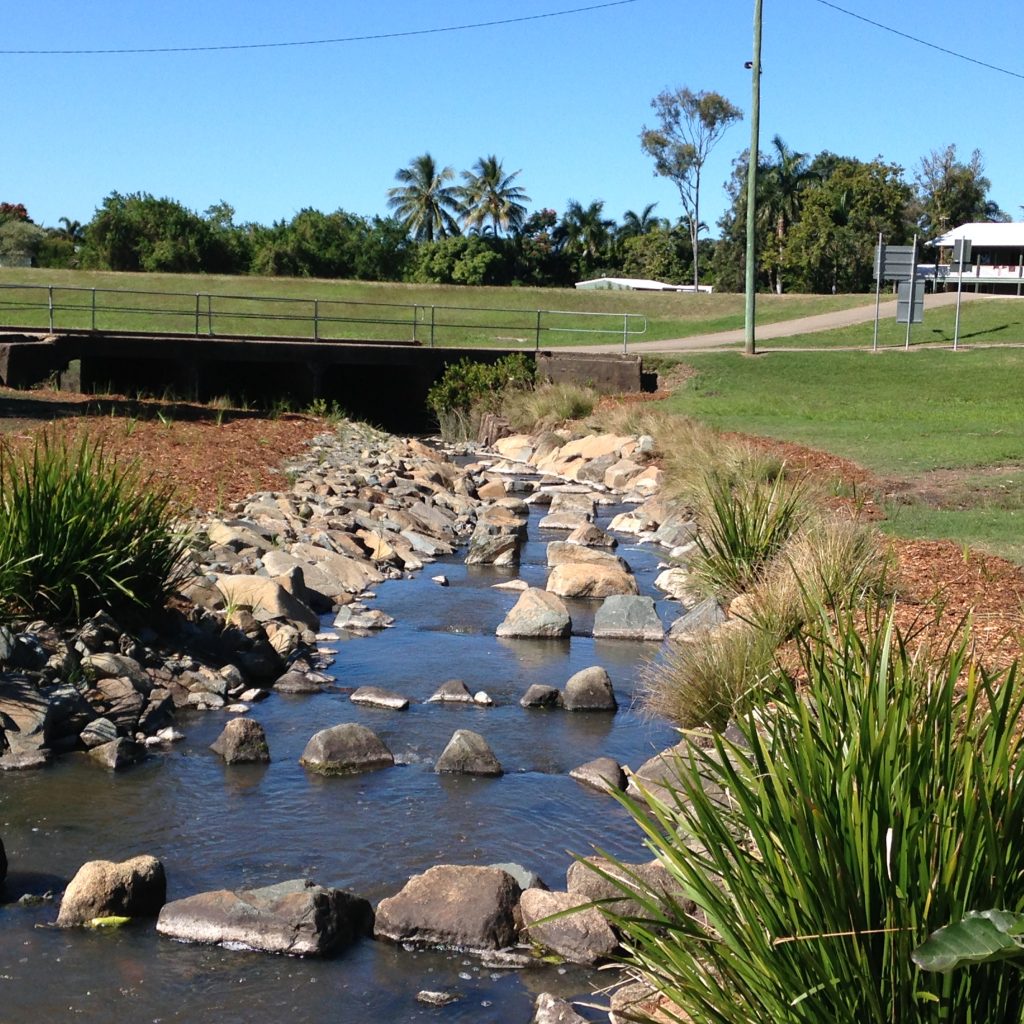Check out this great article on the Fishing World website which includes some excellent footage of the new fishway.
Catchment Solutions fishways
Jungle perch stretch their fins in Brendale
Catchment Solutions and Moreton Bay Regional Council have completed a nature like rock ramp fish ladder at Leitch’s Crossing on the South Pine River which allows economically valuable juvenile fish to move freely upstream.
Catchments Solutions fisheries biologist, Matt Moore, said the native fish were really poor swimmers and could only swim fast in small bursts which meant road crossings, causeways, weirs and culverts were major barriers.

The velocity through the pipes, and the drop of downstream at Leitch’s Crossing, prevented critical life-cycle dependant migrations upstream for decades which impacted on native fish populations.
“We’ve opened up breeding habitat for Jungle Perch and Australian Bass, both of which are popular with recreational fishers,” said Matt.
Councillor Mike Charlton said the new fishway, located on the border between Brendale and Albany Creek, was similar to a set of stairs and allowed fish to easily make their way up and down the peak of an existing culvert one step at a time.

More than 400 tonne of rocks, weighing as much as 3.5 tonne each were strategically placed with a large excavator to form a series of pools interspersed with small 70 mm drops.
Catchment Solutions has completed three out of the planned five fish-ways to re-connect fish habitats
fragmented by barriers in South-east Queensland. These five were identified as the most important to need remediation out of 13,797 barriers in the region.

The South Pine River fish ladder is a joint project between Moreton Bay Regional Council and Reef Catchments with co-funding from the Australian Government National Landcare Programme (Target Area Grant). The design and construction of the Fish Ladder on Leitchs Crossing in Brendale was overseen by environmental consultants Catchment Solutions.
A fishway in photos: Mackay Gooseponds Fishway Repair
Fishways are essential in improving connectivity and building a more sustainable and healthy native fish population.
Fish migration is essential, particularly for important diadromous (migratory) species such as; barramundi, mangrove jack, giant herring, tarpon, jungle perch and Australian bass. All these fish species breed in estuarine or marine environments, before their off-spring migrate into freshwater rivers and wetlands to feed, grow and evade predators.
Often, there are barriers to fish attempting to migrate and this can significantly impact our native fish population. For example, any barrier restricting or preventing barramundi from reaching important nursery grounds is going to have an impact on barramundi numbers into the future.
If the barrier cannot be removed, to overcome this an appropriately designed fish ladder (fishway) is the best rehabilitation strategy.
Here, we look at a fishway in photos to help showcase the elements involved.
The fishway at the lower end of the Gooseponds in Mackay was built in 2000 and has helped support fish passage for important species for many years. Over the last decade there have been many improvements in fishway design that increase functionality and service life, and make them more aesthetically pleasing. When funding became available to do some repair work to this fishway, new design elements were built in. As you can see the results speak for themselves.
Funding was provided by Reef Catchments in partnership with Mackay Regional Council. Design and on-ground works were undertaken by Catchment Solutions.
Read more about fish ladders here: https://www.catchmentsolutions.com.au/fisheries-aquatic-ecosystems/
